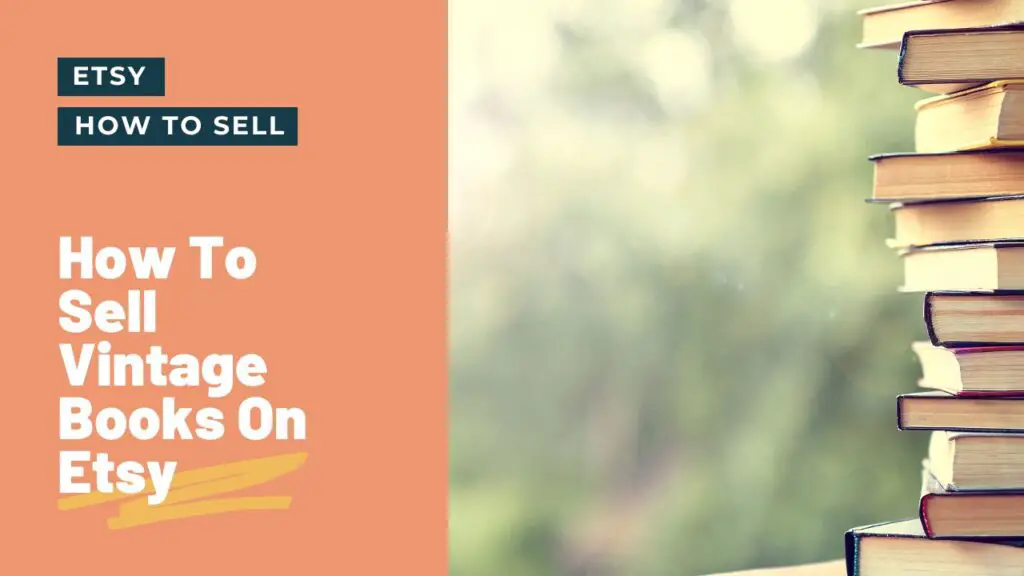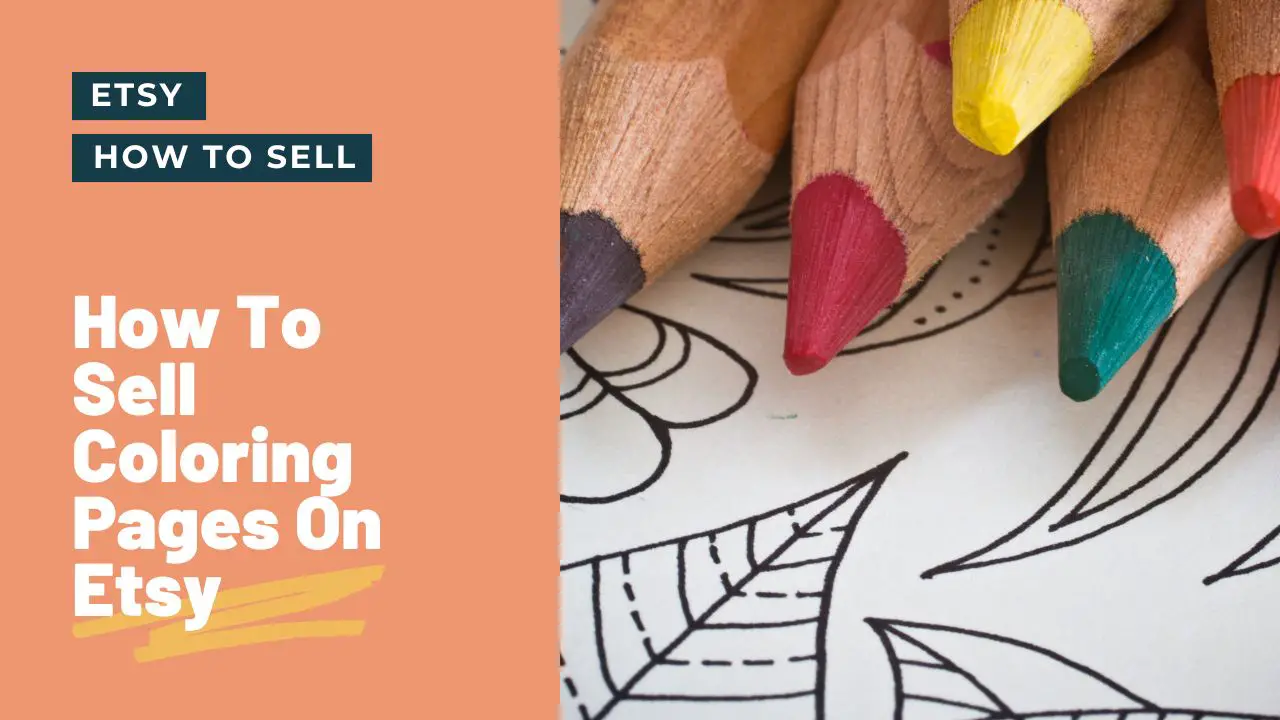Vintage books are a treasure trove of knowledge, history, and culture that have been passed down through generations. If you have a collection of vintage books that you want to sell, Etsy is a great platform to showcase and sell your collection to book lovers around the world.

However, selling vintage books on Etsy requires a unique approach that differs from selling other products. To be successful, you need to understand the market, the demand, and the interests of your potential customers.
In this article, we will guide you through the process of selling vintage books on Etsy, from identifying the right books to sell, creating a compelling product listing, and promoting your shop to attract buyers.
Whether you’re a seasoned bookseller or new to the world of vintage books, this guide will equip you with the knowledge and skills you need to succeed on Etsy.
So, grab a cup of tea, and let’s dive into the world of selling vintage books on Etsy!
Research and Preparation for Selling Vintage Books
Before you start selling vintage books on Etsy, it’s important to do some research and preparation.
First, you need to identify the types of vintage books that are in demand and have a good resale value. Some popular categories of vintage books include first editions, rare books, signed books, and books with unique cover art or illustrations.
You can use websites like AbeBooks, Alibris, and Biblio to research the value of vintage books and get an idea of what books are currently in demand.
Once you have identified the types of vintage books you want to sell, it’s time to start building your inventory.
You can find vintage books at thrift stores, garage sales, estate sales, and online marketplaces like eBay and Craigslist.
When sourcing vintage books, it’s important to inspect them carefully for any damage or signs of wear and tear. You should also clean and repair any books that need it before listing them for sale on Etsy.
Another important aspect of preparation is setting up your workspace. You should have a designated area for storing and organizing your vintage books, as well as a space for packing and shipping orders.
It’s also a good idea to invest in some basic supplies like shipping materials, a scale, and a printer for printing shipping labels and packing slips.
Creating an Etsy Seller Account
The next step in selling vintage books on Etsy is to create a seller account.
If you already have an Etsy account, you can simply add a new shop by clicking on the “Sell on Etsy” button on the homepage. If you’re new to Etsy, you’ll need to create an account by providing your personal information and creating a shop name.
Once you have set up your shop, it’s time to start creating product listings for your vintage books. When creating a listing, you should include a detailed description of the book’s condition, any unique features or attributes, and a high-quality photo of the cover and spine.
You should also include relevant keywords in your listing title and description to optimize it for search engines and make it easier for buyers to find.
Listing Vintage Books on Etsy
When listing vintage books on Etsy, it’s important to be transparent about the condition of the book and any flaws or damage it may have.
This will help to avoid any misunderstandings or disputes with buyers down the line. You should also include multiple high-quality photographs of the book from various angles to give potential buyers a clear idea of what they’re purchasing.
In addition to the book’s condition and photos, you should also include a detailed description of the book’s history and any notable features.
This could include information about the author, the publisher, the year of publication, and any unique cover art or illustrations. You should also include information about the book’s rarity or collectibility, if applicable.
Pricing Vintage Books for Maximum Profit
Pricing vintage books can be a tricky process, as it requires balancing the book’s value with its demand in the market. One strategy is to research the prices of similar vintage books on Etsy and other online marketplaces, and price your books competitively based on their condition and rarity. You can also consider offering discounts for bulk purchases or running sales during peak buying seasons like the holidays.
“Cheaper” doesn’t always mean “Better”. Pricing your products below your competitors just leads to a price war.
Also, a product with a higher price can lead the customer into thinking your product is worth more. A highly priced product may sell less, but make more money over time due to higher profit margins.
Another strategy is to price your vintage books higher than the market average and target buyers who are willing to pay a premium for rare or highly sought-after books. However, this strategy requires a deep understanding of the book market and the interests of your potential customers.
Shipping Vintage Books to Customers
Shipping vintage books can be a delicate process, as they require extra care and attention to ensure they arrive in the same condition they were in when they were sold.
When shipping vintage books, it’s important to use high-quality shipping materials like bubble wrap and sturdy boxes to protect them from damage during transit. You should also consider adding insurance to your shipments to protect against loss or damage.
Another important aspect of shipping vintage books is to communicate with your buyers throughout the process.
Products listed with Free Shipping are boosted in Etsy search. This means you have a better chance of being seen.
Also, listings with Free Shipping convert sales better – even if the shipping price is just included in the product price
You should provide them with tracking information and let them know when their order has been shipped, as well as follow up after the order has been delivered to ensure their satisfaction.
Promoting Your Vintage Books on Etsy
To attract buyers and increase sales of your vintage books, it’s important to promote your shop and listings on Etsy and other online channels.
One effective strategy is to optimize your listings for search engines by including relevant keywords in your titles and descriptions. You can also consider running Etsy ads or social media ads to reach a wider audience.
Another effective strategy is to engage with your customers and build a community around your shop.
You can do this by responding promptly to customer inquiries, offering discounts or promotions to repeat customers, and sharing behind-the-scenes photos or stories about your vintage book collection on social media.
Customer Service for Vintage Book Sales
When selling vintage books on Etsy, it’s important to provide excellent customer service to ensure the satisfaction of your buyers.
This includes responding promptly to customer inquiries, addressing any concerns or issues they may have, and providing accurate and detailed information about your vintage books.
It’s also important to be transparent about your policies and procedures for returns, refunds, and exchanges. This will help to build trust with your buyers and ensure a positive shopping experience for everyone.
Tips for Successfully Selling Vintage Books on Etsy
Here are some additional tips for successfully selling vintage books on Etsy:
- Continuously research the market and demand for vintage books to stay up-to-date on trends and prices.
- Offer a wide variety of vintage books to appeal to a wider audience.
- Consider bundling multiple books together to increase the value of your listings.
- Provide high-quality customer service and communicate with your buyers throughout the process.
- Be patient and persistent, as selling vintage books on Etsy can take time and effort.
Conclusion
Selling vintage books on Etsy can be a rewarding and profitable experience for book lovers and collectors.
By following the tips and strategies outlined in this guide, you can create compelling product listings, attract buyers, and build a successful vintage book shop on Etsy.
Remember to research the market, prepare your inventory, and provide excellent customer service to ensure the satisfaction of your buyers. Happy selling!






